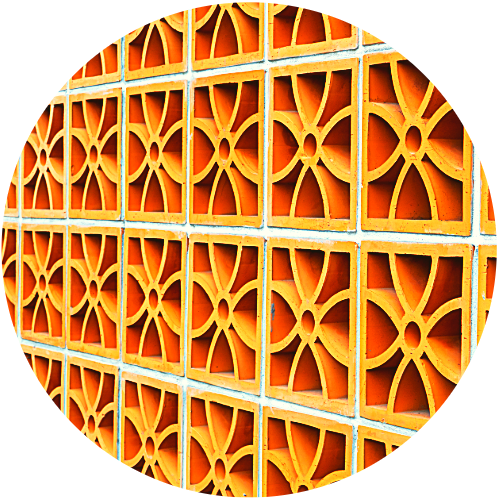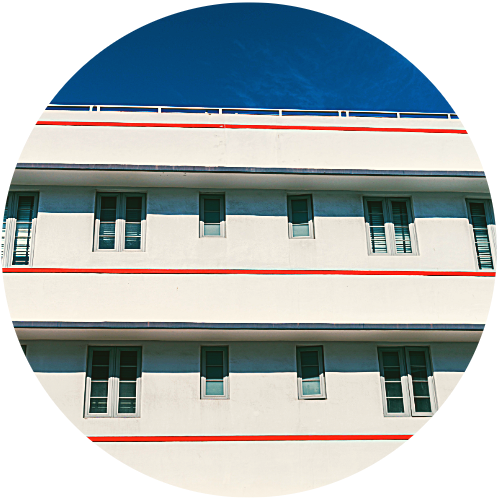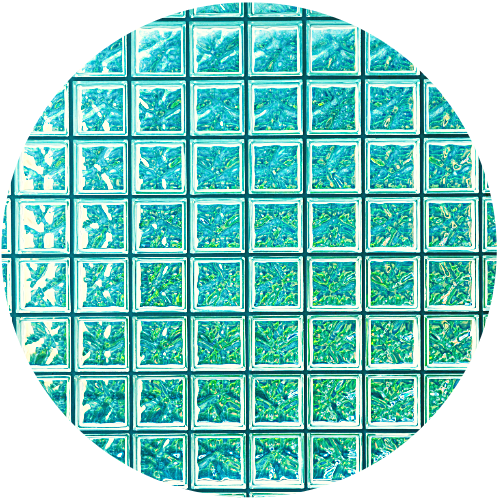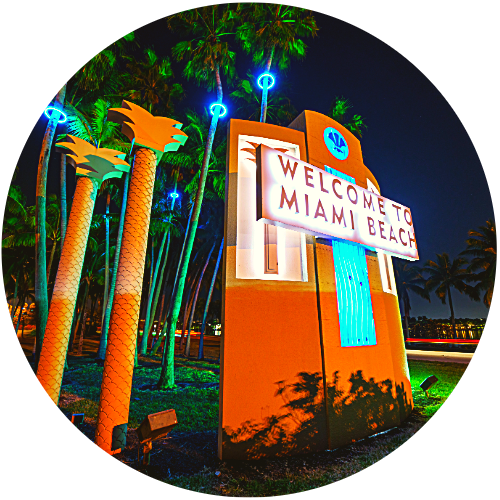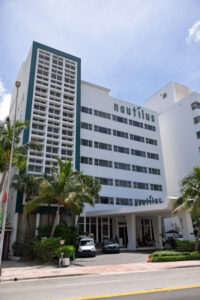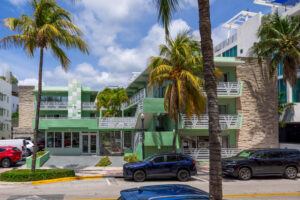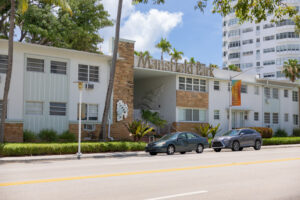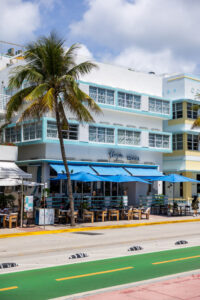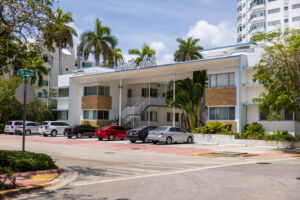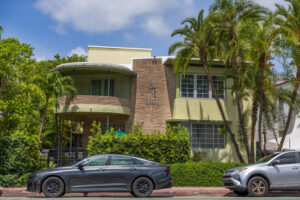MiMo
Miami Modern (MiMo) architecture is a defining feature of Miami Beach, offering a sleek, futuristic aesthetic that reflects the postwar era's optimism. From iconic hotels like the Fontainebleau to tropical motels along Collins Avenue, MiMo buildings remain a vital part of the city’s identity.
Most MiMo properties in Miami Beach are found in the Mid and North Beach neighborhoods. This can be attributed to the timing of their development in the post-WWII boom. South Beach, already home to the iconic Art Deco District, was well-established by this time. In contrast, the Mid and North Beach areas were still developing, offering more available land for new construction. This allowed architects to experiment with the newer MiMo style, which featured sleek lines, bold geometry and innovative materials such as glass block, neon lights and terrazzo flooring.
These neighborhoods were also more affordable and less developed compared to the bustling South Beach, making them attractive to developers who sought to capitalize on the postwar boom and design modern structures. As a result, MiMo architecture flourished along Collins Avenue and in other parts of North and Mid Beach, where motels and hotels in this iconic style were constructed.

FUN FACT: Air conditioning was introduced to the masses in the MiMo era.

KEY FEATURES
-
Decorative Blocks
Decorative concrete blocks were used as walls, railings, fences and more. They were structurally sound while allowing light and air to pass through giving way to the name “breeze block.”
-
Sleek, Futuristic Lines
MiMo buildings often feature smooth, curved lines and streamlined forms. The style is marked by a sleek, futuristic appearance, emphasizing minimalism and clean geometry.
-
Flat Roofs with Projecting Eaves
One of the signature characteristics of MiMo is the flat roof, which was both functional and stylish. These roofs gave the buildings a modern, boxy look.
-
Use of Glass
Large windows and expansive glass walls are common in MiMo architecture, allowing for seamless integration between indoor and outdoor spaces. The use of glass allowed for open, airy interiors that capitalized on Miami’s natural light and views.
-
Tropical Influence
The design of MiMo buildings often incorporates tropical motifs, such as rounded corners, palm fronds and geometric patterns inspired by nature. These elements helped link the architecture to the city’s sunny, beachy environment.
-
Bold Signage and Marquees
Just like in Art Deco, signage plays a crucial role in MiMo architecture. Large, neon-lit marquees and signs with bold fonts were common.

NOTABLE PROPERTIES
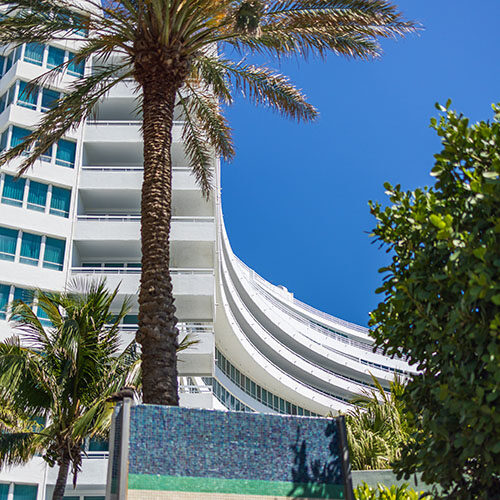
Fontainebleau Miami Beach
4441 Collins Avenue
Year Built: 1954
Architect: Morris Lapidus
The Fontainebleau is one of the most famous examples of MiMo in Miami Beach and was the largest hotel in the world from its opening in 1954 until 1999. While it is considered a bit more lavish than some of the simpler MiMo structures, its innovative design, with its sprawling modernist exterior and curving forms, perfectly captures the style. Lapidus utilized both modernist materials and dramatic lines to create an iconic resort that remains a major landmark today.
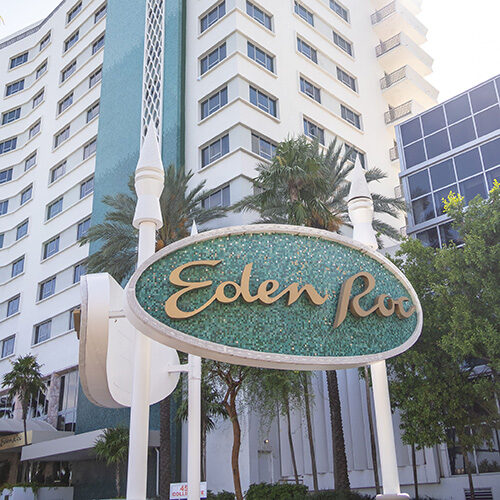
Edon Roc Hotel
4525 Collins Avenue
Year Built: 1956
Architect: Morris Lapidus
The Eden Roc Hotel is one of the most iconic examples of MiMo architecture in Miami Beach. Designed by the famed architect Morris Lapidus, it blends futuristic elements with luxury and comfort. Its curved, sweeping lines, prominent use of glass and bold color choices exemplify the MiMo style. The hotel remains a symbol of mid-century modernism in the area.
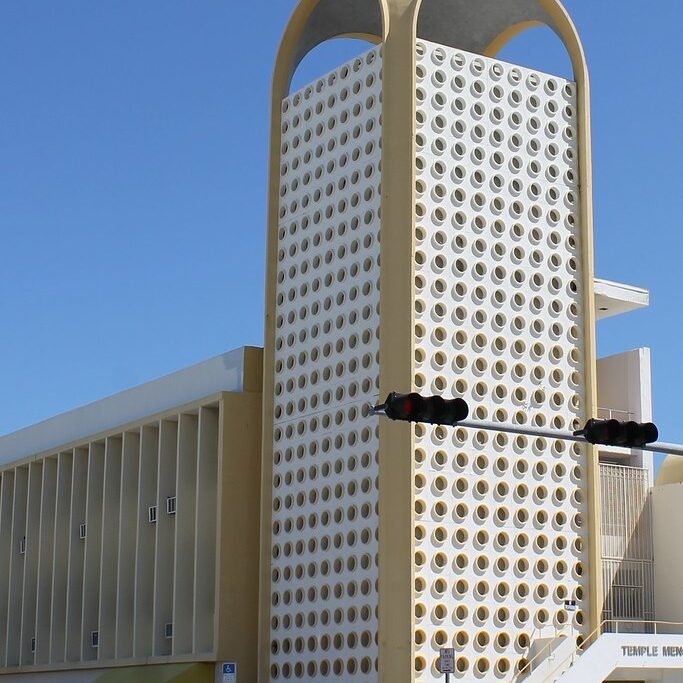
Temple Menorah
620 75 Street
Year Built: 1951 (Gilbert Fein) with additions in 1963 by Morris Lapidus
The Temple Menorah is a fine example of MiMo architecture, particularly due to its use of curvilinear forms and futuristic design elements. The building features a distinctive, sweeping concrete roof, which is a hallmark of the MiMo style and the structure’s use of modern materials like steel and glass also contributes to its MiMo aesthetic. The building’s design reflects the optimism and forward-thinking vision of the 1950s and incorporates dramatic and sculptural elements that were popular during the mid-century era.
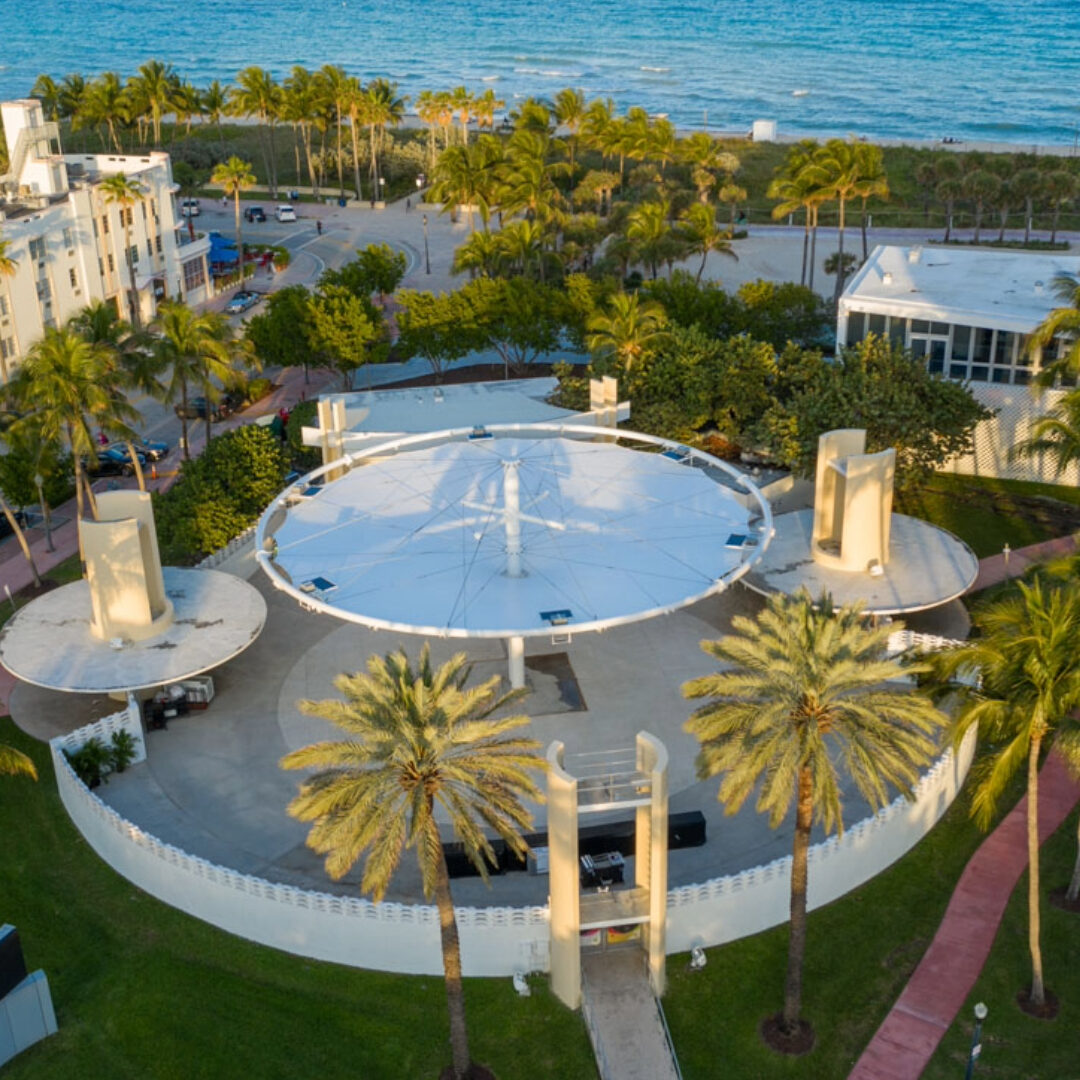
Kiosque à musique de Miami Beach
7275 Collins Avenue
Year Built: 1960
Architect: Norman Giller
The Miami Beach Bandshell is a classic example of MiMo architecture, as it features the era’s signature combination of sleek lines, futuristic forms and bold, expressive geometry. The building’s design has a dynamic, curved roof that emphasizes a sense of movement, something characteristic of MiMo architecture.
Learn more by reading our 'Strike Up the Band' story in pages 33 - 39 of MB Magazine.

